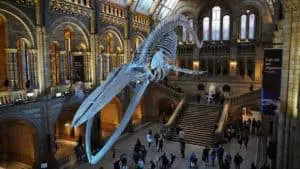The Cultural Significance of Windmills: An Insight into Their Historical and Modern Roles
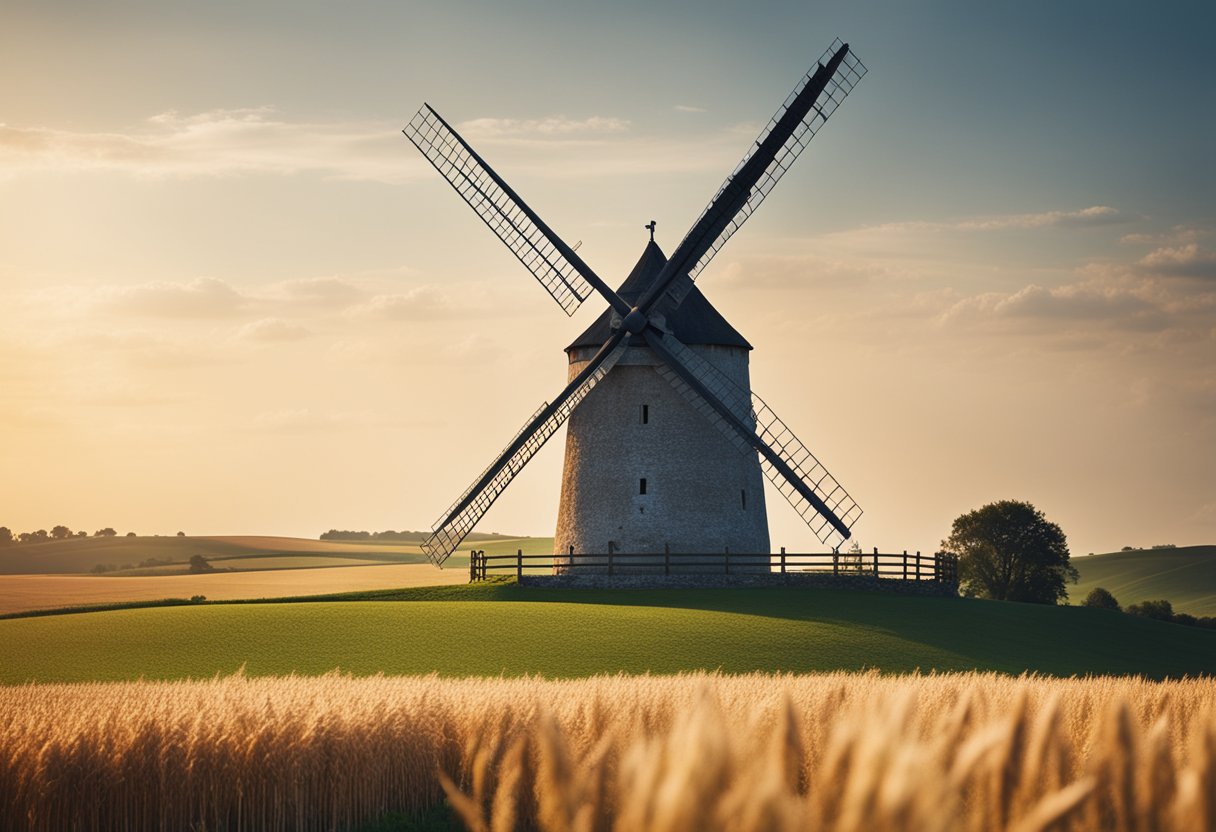
Updated On: April 15, 2024 by Maha Yassin
Windmills have long stood as towering figures in the landscape of human progress, embodying a fusion of cultural heritage and technological ingenuity. Not mere relics of the past, these structures have played a pivotal role in shaping societies, influencing everything from agriculture and industry to art and literature. Throughout history, windmills have enabled advancements that revolutionised how we live, signifying mankind’s perennial drive to harness natural forces.
Particularly in the Netherlands, windmills are not simply useful contraptions but are deeply interwoven with national identity, where they have been instrumental in land reclamation and water management. These iconic sentinels of the Dutch skies represent a graceful balance between environmental harmony and human necessity. Yet, their significance extends beyond functional uses; windmills are symbolic of sustainability and have become cultural touchstones that have inspired traditions and lore, as well as emerging as beacons for eco-consciousness in modern times.
Historical Evolution of Windmills
Windmills have significantly transformed from their ancient origins to the advanced structures we know today, playing vital roles in agriculture, industry, and music.
Early Origins and Development
Windmill technology began in antiquity, with the earliest known references pointing to Persia around 600-900 AD. Early windmills had vertical axis designs and were primarily used for grinding grain and drawing water. This concept spread throughout the Aegean Sea region and eventually reached China, where similar applications were found.
Advancements in Windmill Technology
By the 12th century, Europe adopted the post-mill design, the earliest of which was depicted in England. With a design pivotally mounted on a single vertical post, these allowed the entire structure to be turned into the wind. The progression saw the tower mill being developed; this was a more robust version with a fixed body and a rotatable cap. These innovations improved efficiency and opened up new possibilities for using wind energy in various industries.
Windmills in the Netherlands
The saga of Dutch windmills is not just about historic structures but also reflects the Netherlands‘ cultural heritage that has shaped its national identity and landscape.
Dutch Windmills and National Identity
The presence of windmills in the Netherlands is emblematic of Dutch engineering and self-sufficiency. Historical records trace their existence back to the 13th century, with the earliest mills playing a critical role in water management. Reclaimed land, known as polders, and keeping the country dry meant that windmills were not merely industrial tools but staples of survival and prosperity. Today, these Dutch resilience and adaptability symbols are cherished as part of our national identity, contributing to the unique cultural narrative celebrated by locals and visitors alike.
The Iconic Landscape of Kinderdijk
Nowhere is the quintessence of Dutch windmills more visible than in Kinderdijk, a UNESCO World Heritage site. Here, a network of 19 impeccably preserved mills stands as a testament to the ingenious Dutch water management systems of the past. The iconic silhouette of Kinderdijk’s windmills against the flat horizon offers a timeless glimpse into the Netherlands’ history, so much so that it has become a cultural pilgrimage for those travelling to understand the historical interplay between mankind and nature in our country.
Cultural Impact and Significance
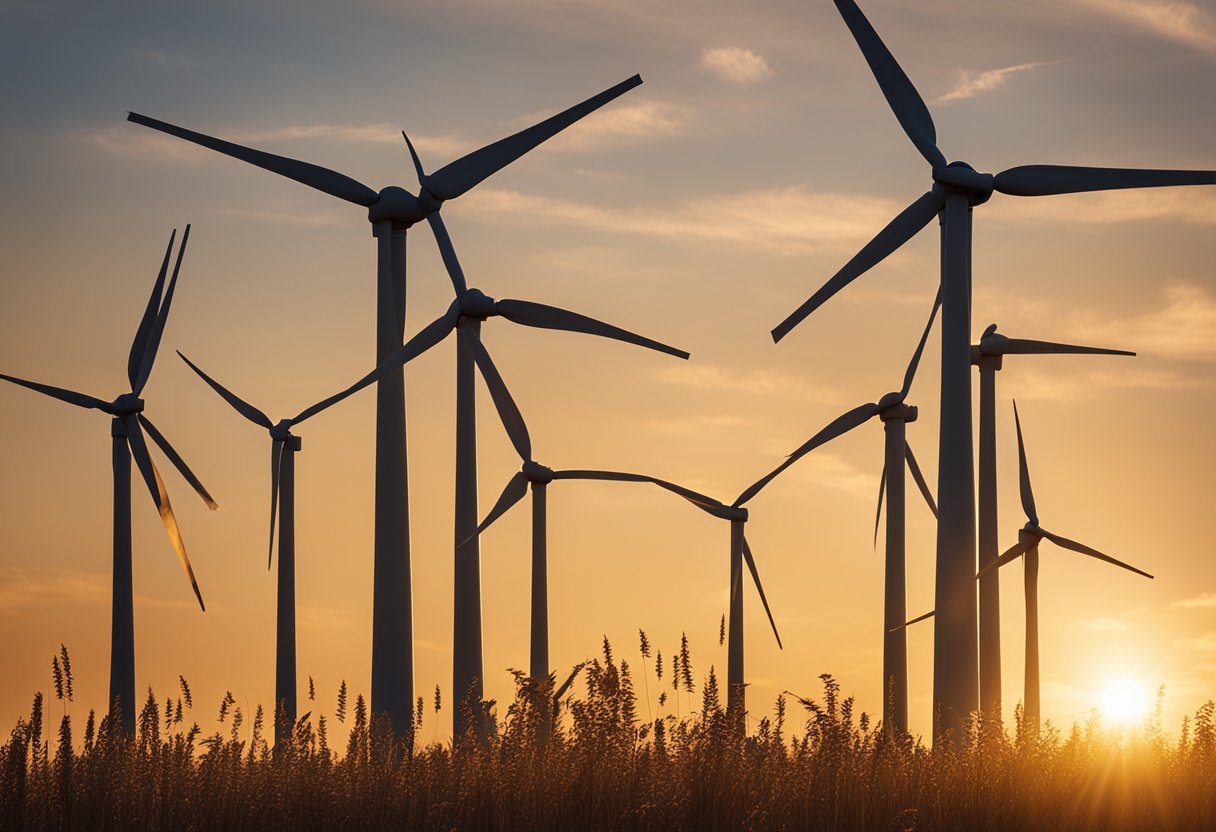
The windmill stands as a celebrated icon in culture and heritage, weaving its silhouette into the canvas of history. It is entrenched in our cultural landscape, standing as a testament to innovation and endurance across generations.
Windmills in Literature and Art
Throughout history, windmills have been muses to artists and writers, encapsulating the essence of pastoral life and human ingenuity. Paintings by Dutch masters prominently feature windmills, which have become synonymous with Dutch cultural identity. The Rijksmuseum in Amsterdam houses many of these works, bringing visitors closer to understanding this deep connection. In literature, windmills have turned the pages of time, from Cervantes’ quixotic adversary in “Don Quixote” to the scenic backdrops in children’s storybooks, each story resonating with the mill’s steadfast presence in our collective narrative.
Symbolism and Heritage
To us, windmills are more than structures; they are rich symbols of our heritage. Emblematic of Dutch cultural heritage, they are ingrained in our identity and way of life. These icons represent the Netherlands‘ battle against water and stand as proud monuments to sustainable practices long before our current environmental focus. As guardians of our past, windmills also prompt us to consider our future, reminding us of the significance of preserving our environment and cultural landmarks for future generations.
Windmills and Industrial Expansion
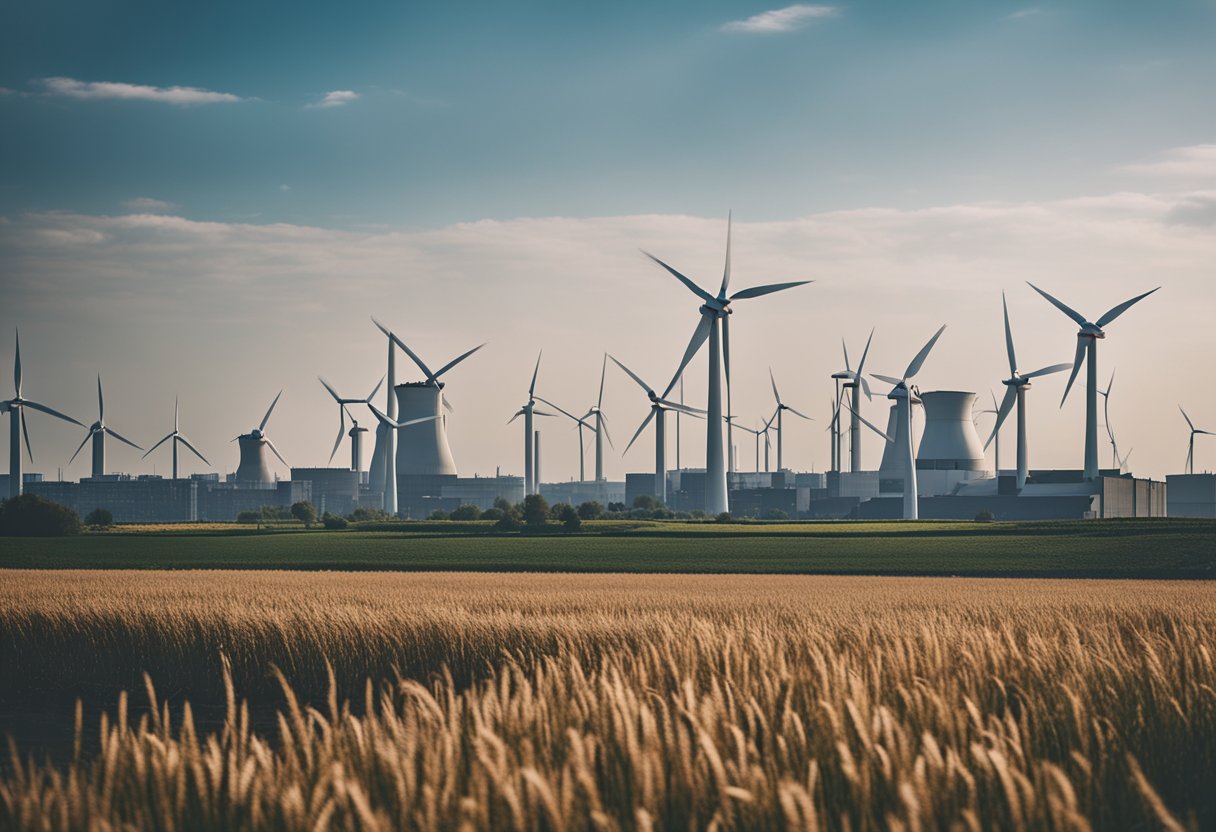
In this section, we explore the transformational role of windmills in industry, focusing on the agricultural revolution and the rise of wind-powered factories.
Revolutionising Agriculture and Production
Windmills have been instrumental in revolutionising agricultural production. By harnessing wind energy to grind grain, these structures provided a more efficient means to process food, bolstering food supply and supporting population growth. The incorporation of milling technology transformed the landscape of agricultural production, enhancing the capabilities of food production on an industrial scale.
From Mills to Industrial Factories
The impact of windmills extended beyond agriculture into various industrial processes. Crucial to this expansion was their application in sawing wood, fundamentally changing the timber industry. Using windmills to power large saws allowed for faster and more precise cutting, facilitating the production of construction materials and supporting the burgeoning shipbuilding industry. This marked a leap in industrial capabilities, laying the groundwork for more complex manufacturing processes and machinery.
Windmill technology played a significant role in shifting from manual labour to industrial factories. Windmills became foundational to developing industries that relied heavily on mechanical processes by providing a reliable power source. This transition is vividly illustrated by the growth of factories utilising wind for energy-intensive tasks, thereby illustrating the scope of windmill technology in sparking industrial expansion.
The Environmental Influence
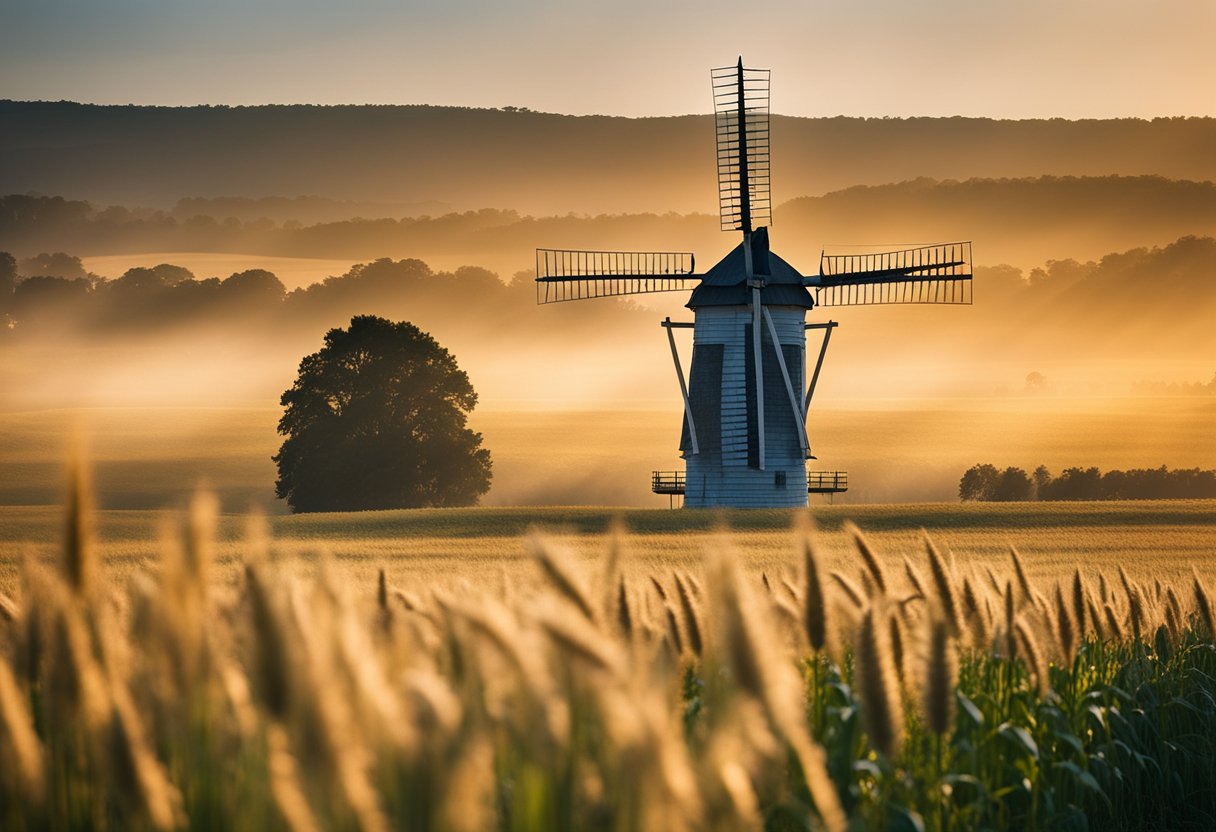
In the context of environmental sustainability, windmills have played a pivotal role not only in the past but also in our current efforts to embrace renewable energy sources. Their significance has evolved from core functions in land management to embody symbols of sustainability.
Windmills and Land Management
Windmills have been instrumental in reshaping the Netherlands by transforming waterlogged landscapes into habitable and fertile land. This was achieved through the powerful windmills that drain water from the low-lying areas, preventing flooding and making the environment more conducive for development and agriculture. Their legacy persists, highlighting a historical harmony between human ingenuity and environmental adaptation.
Renewable Energy and Sustainability
Transitioning towards more sustainable energy sources, modern windmills—or wind turbines—have become quintessential for generating wind energy, a clean and renewable resource that reduces our reliance on fossil fuels. Their environmentally friendly operation plays a significant part in our strategy to combat climate change, reinforcing the importance of renewables in our global effort to ensure a healthier planet for future generations.
Economic Contributions of Windmills
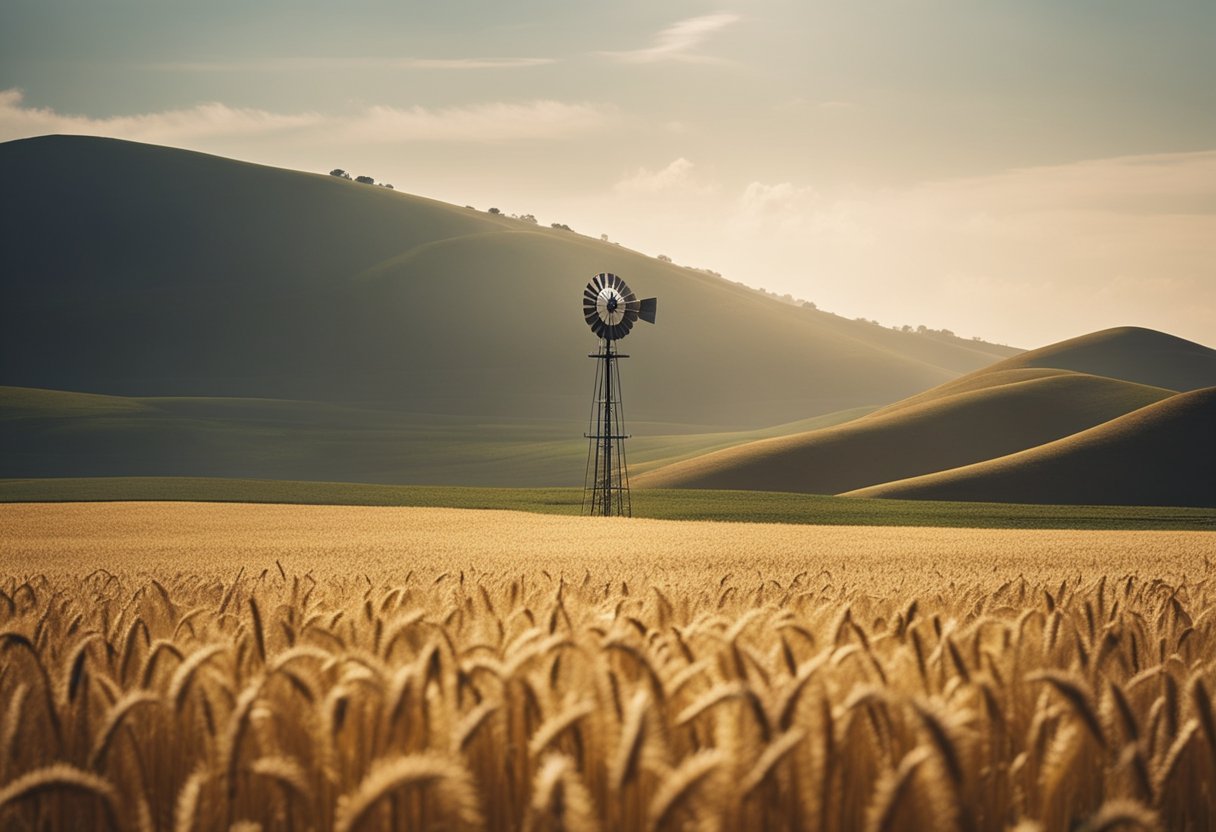
The legacy of windmills extends beyond their historical and cultural significance, playing a substantial role in local economies and tourism.
Windmills in Local Economies
Windmills have historically been at the heart of many local economies, especially in countries such as the Netherlands, where they were used for grinding grain and various industrial processes. Today, the evolution of wind technology continues to bolster local markets by providing jobs associated with the manufacturing, installation, and maintenance of modern wind turbines. These jobs often lead to sustainable community development and economic growth in areas with a strong wind energy sector.
- Manufacturing: Creates employment opportunities in the production of turbine components.
- Installation: Requires specialized skills that contribute to local employment.
- Maintenance: Offers ongoing jobs for technicians and supports peripheral services.
Tourism and Preservation Efforts
Historical windmills have become a focal point for tourism, attracting those interested in history, architecture, and engineering. Sites like the windmills at Kinderdijk in the Netherlands underscore this, where tourists can take bicycle tours to appreciate these feats of engineering amidst picturesque settings. Small-group and private trips centred around windmills are common, often integrated with rail trip packages highlighting cultural heritage. These tourism activities not only help fund the preservation of windmills but also contribute to the broader economy by encouraging travel and associated expenditures on hospitality and local products.
- Tour Guide Services: Involvement in educational tours about the history and operation of windmills.
- Preservation Efforts: Entrance fees and donations aid in conserving historical sites.
- Localized Travel: Encourages visitors to explore rural areas, benefiting local businesses.
The Decline and Preservation of Windmills
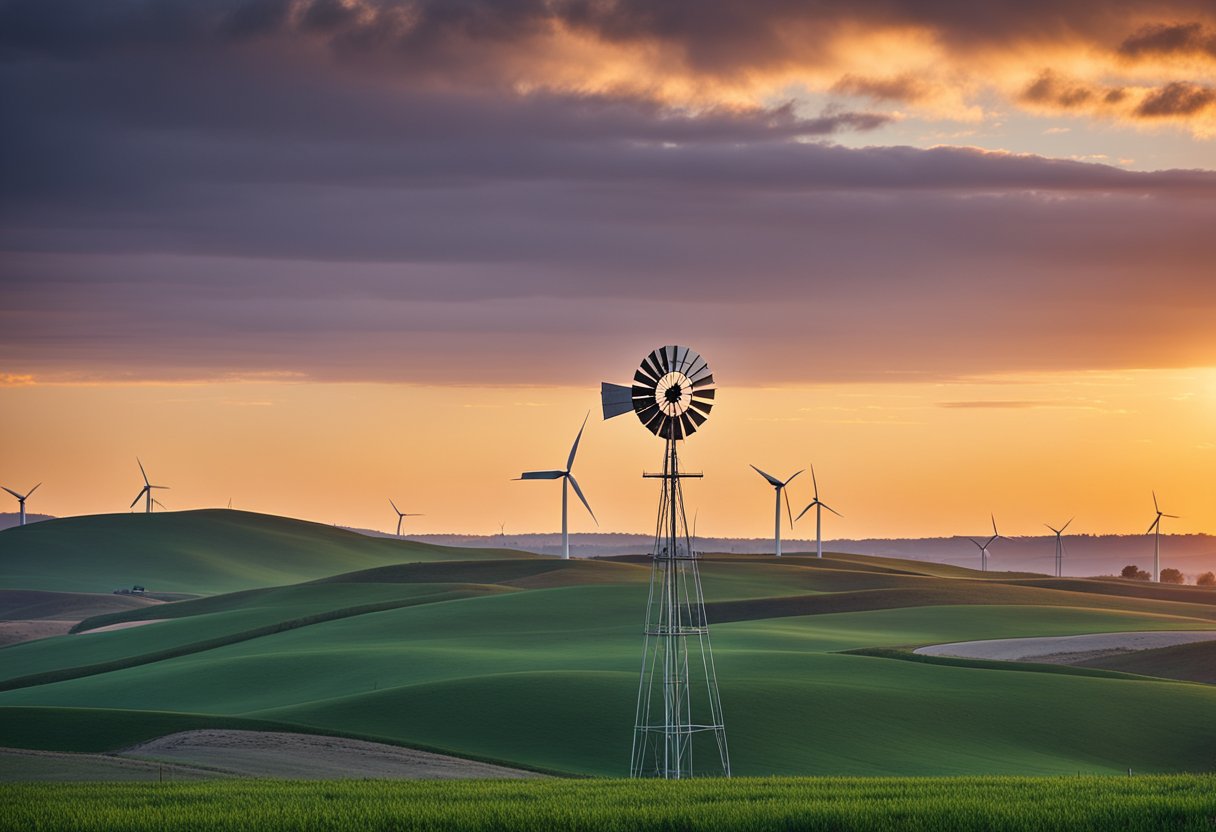
Windmills have faced a notable decline from their historical prominence, yet efforts for their preservation have gained momentum in recent times, reflecting an appreciation of their cultural and historical importance.
Causes of Decline
The introduction of alternative energy sources and the industrialisation of milling processes led to a significant decrease in operating windmills. Technological advancements throughout the 19th and 20th centuries rendered many traditional wind-powered operations obsolete. The decline was exacerbated by the rise in electricity and fossil fuels, which offered more reliable and efficient means of power generation and milling, leading to the abandonment of numerous historic windmills.
UNESCO Sites and Conservation
In response to the decline, conservation efforts have emerged, with some windmills designated as UNESCO World Heritage Sites. This status protects and recognises them, emphasising their value to humanity’s shared heritage. Moreover, local and international groups dedicated to preserving these structures have been instrumental in maintaining them, ensuring that these iconic symbols of our past remain an integral part of the landscape and continue to educate the population on traditional methods of industry and craftsmanship.
Technology and Innovation
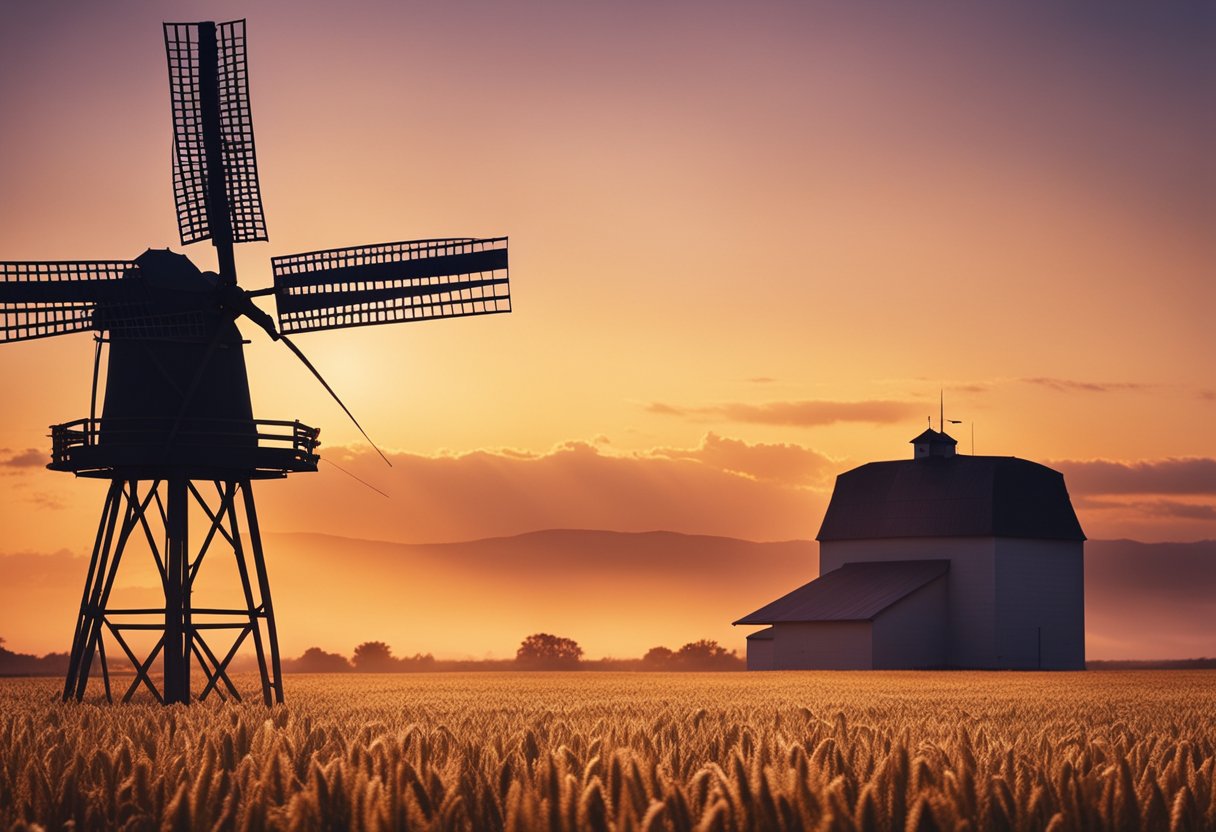
In exploring the journey from the early windmills used for grinding grain to the contemporary giants generating renewable energy, we must appreciate the sustained progress in technology and innovation.
From Traditional Windmill to Modern Wind Turbine
Initially, windmills transformed kinetic wind energy into more tangible forms of mechanical work, like pumping water or grinding grain in a sawmill. However, the Persian windmills, known for their vertical axle design, laid the groundwork for future innovations. The traditional windmill structures were adept at providing energy to perform specific tasks but were regionally constrained and variable in efficiency.
Efficiency and Advancements
The leap from windmills to wind turbines showcases a significant improvement in efficiency and the versatility of wind energy. Modern turbines embody advanced engineering, generating electricity to power communities and industries. They’re designed with aerodynamic blades and high-tech materials, converting a greater percentage of wind into energy, which is systematically fed into the grid. The evolution of wind turbine technology demonstrates this progress, revealing turbines that are taller and more powerful and smarter, incorporating predictive algorithms and automation for optimal wind energy utilisation.
Social and Educational Centres
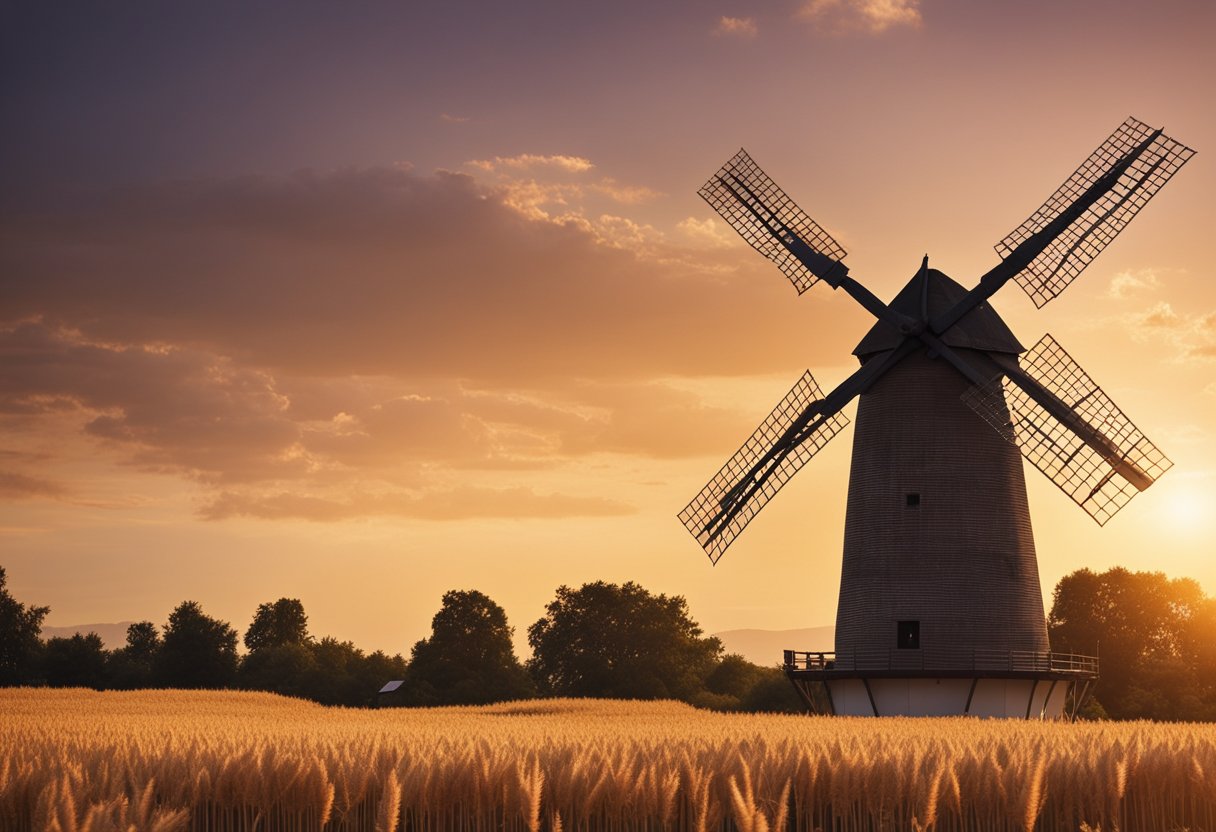
Windmills hold more than just historical and economic significance; they have evolved into important social and educational centres. In the Netherlands, these structures magnify the culture and heritage, serving as interactive museums and vibrant venues for community engagement.
Windmills as Museums and Learning Hubs
Steeped in history and technical marvels, windmills have been transformed into museums offering educational programs and interactive experiences. Molen de Valk in Leiden is a testament to these iconic Dutch constructions. Visitors can delve into this tower mill’s intricate mechanics and past life as a grain mill. By preserving such structures, we maintain a tangible connection to our history, utilising these sites to educate future generations about the ingenuity of their ancestors.
Community Gatherings and Celebrations
Our windmills serve as focal points for community gatherings and are especially prominent during celebrations such as National Windmill Day. These joyous occasions see locals and tourists convening around the windmills, often decked out in lights and decorations, becoming beacons of cultural pride. These celebrations are more than mere festivities; they represent the heart of the community, encapsulating the spirit and unity of the populace. Our windmills are reminders of a shared identity, and these communal events underscore the deep connection between people and their heritage.
Lifestyle and Traditions

Windmills are deeply woven into the fabric of Dutch culture, embodying a lifestyle centred around harmony with water, land, and community. These iconic structures have historically supported the livelihoods of local populations and continue to serve as focal points of cultural pride and festivities.
Windmills in Dutch Daily Life
In the Netherlands, windmills are more than just tourist attractions; they play a significant role in our daily lives and are a testament to our history of innovation in land and water management. Historically, windmills in regions such as Zaanse Schans were pivotal in sawing wood, milling grain, and draining water from farmland, helping to reclaim land from the sea in a country where much of the land lies below sea level. Today, although many windmills are no longer in commercial use, they remain a symbol of our enduring Dutch spirit. Many have been converted into homes or museums, preserving their legacy and maintaining their presence in the Dutch landscape.
Festivities and Cultural Events
Our windmills form a picturesque backdrop to numerous Dutch festivities and cultural events. In places like Amsterdam and Leiden, windmills are prominent features during celebrations such as National Windmill Day, where we open our windmills to the public and decorate them beautifully. Amongst fields of vibrant tulips, these events allow us to showcase our heritage, often accompanied by traditional music, cycling tours of windmill routes, and local culinary delights. In towns like Edam, festivals often spotlight our affinity for trade and craftsmanship, with windmills reminding us of their historical role in our thriving cheese industry. These structures are not just relics of the past but active participants in celebrating and preserving our way of life.

FAQs
As we explore the rich tapestry of windmill history and their significance, these frequently asked questions will guide us through their evolution and cultural impact.
From a historical perspective, what role did windmills play in the development of agriculture?
Windmills were pivotal in transforming agricultural practices. Originating in the Middle Ages, they were primarily used for grinding grain, which greatly increased the efficiency of food production.
How has the perception of windmills shifted from milling to energy production?
With the advent of modern technology, windmills transitioned into wind turbines, now seen as harbingers of green energy. This shift highlights a move from mechanical to sustainable electrical energy production.
Who is credited with the invention of the windmill, and in what historical period did it occur?
The windmill is believed to have been invented in the Middle Ages, with the earliest known windmills appearing in Persia. These early machines later inspired European designs.
Can you detail the evolution of wind energy from its inception to its contemporary applications?
Wind energy has evolved from mechanical uses, like pumping water and grinding grain, to generating electricity. Today’s wind turbines are sophisticated structures harnessing wind power to supply clean energy.
In what ways do windmills embody cultural and symbolic significance in different societies?
Windmills have long been symbols of human ingenuity in harmony with nature. They represent cultural identity in countries like the Netherlands and are celebrated in art, literature, and folklore.
At what point in history did wind turbines gain prominence, and what factors contributed to their popularity?
Wind turbines gained prominence during the 20th century, particularly with the oil crisis of the 1970s, which spurred the search for alternative energy sources, thus propelling their popularity.


